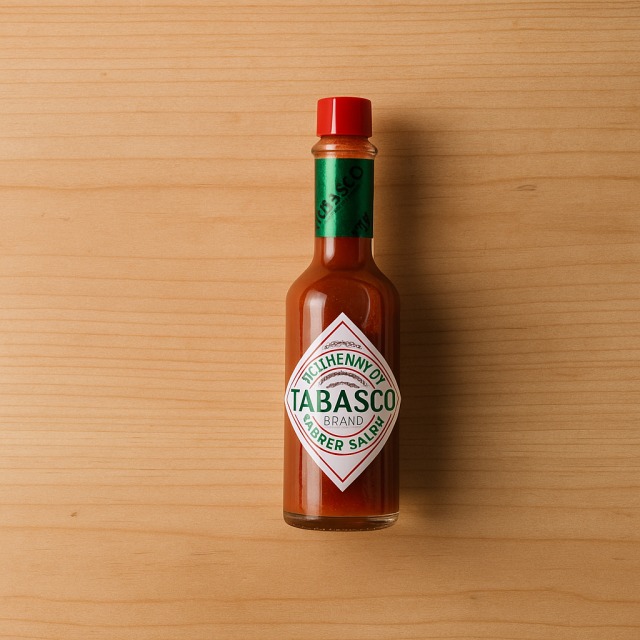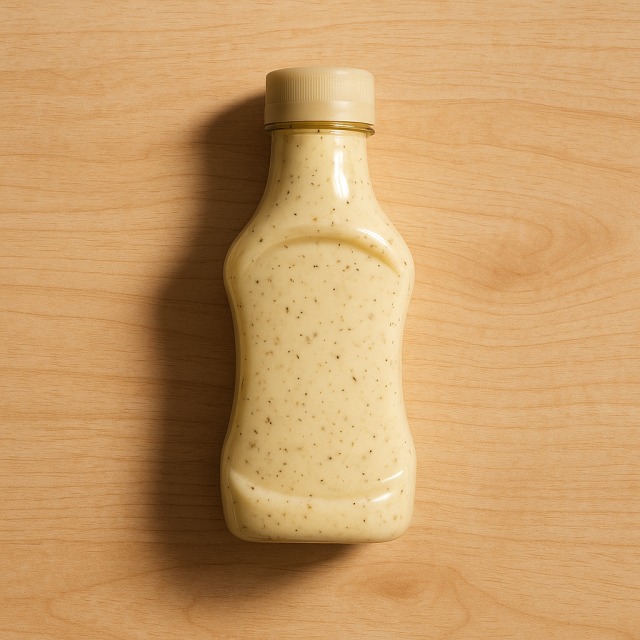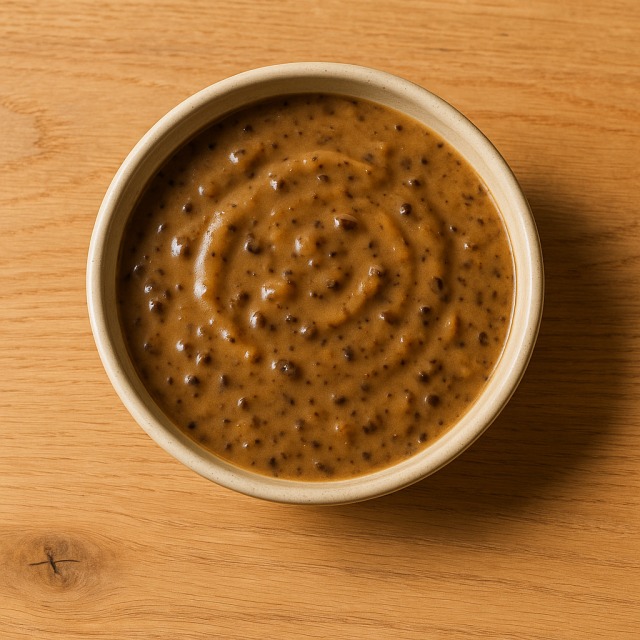Calorie Chart / Seasoning & Sauces / Soy sauce
How Many Calories Are in Soy sauce?
Calculation of the nutritional value & Recommended Dietary Intake of soy sauce
For ml and a calorie requirement of kcal
| Calories 9 kcal | Proteins 1.1 g | Lipids 0 g | Carbohydrates 1.2 g |
| 0% | 1% | 0% | 0% |
Health benefits of soy sauce

Soy sauce - 100ml
Calories 60 kcal
Proteins 7 g
Lipids 0 g
Carbohydrates 8 g
Fermented from soybeans, wheat, water, and salt, soy sauce is renowned for delivering an intense umami taste while remaining low in calories; its reduced calorie content makes it a convenient flavor enhancer for anyone aiming to lower daily calories without sacrificing taste. Because it contributes only a modest amount of calories, many nutrition-conscious consumers rely on it to season dishes instead of higher-fat condiments.
Nutritionally, soy sauce supplies small amounts of protein as well as trace minerals such as iron, potassium, and, in particular, manganese. Fermentation also yields a little niacin (vitamin B3) and antioxidant compounds like melanoidins. Some studies mention isoflavones that could have heart-protective effects—these benefits remain **supposed** rather than definitively proven.
The natural fermentation process encourages the development of probiotic microorganisms that may aid digestion, although the product is usually pasteurized before bottling. Historically, this condiment traveled from ancient China to Japan, before Dutch merchants introduced it to Europe in the 17th century, where it quickly became prized for its flavor-for-calories efficiency.
Do keep in mind that soy sauce is rich in sodium, so users monitoring blood pressure should moderate quantities even though the sauce itself is very modest in calories.
Tips for incorporating soy sauce into a balanced diet
Because soy sauce is so sparing in calories, it can replace heavier gravies in many preparations. Create a quick marinade by mixing it with ginger, garlic, and a teaspoon of honey for lean chicken breast; the meat picks up flavor while the overall calories stay low. The same mixture works wonderfully on salmon or cubes of tofu.
For a plant-forward side dish that keeps calories under control, drizzle a teaspoon over steamed broccoli and sprinkle with toasted sesame seeds. You will boost taste without adding significant calories or fat.
Need a fast bowl after training? Combine brown rice, edamame, and shredded carrots, then season lightly with soy sauce and a touch of lime juice. Compared with ready-made stir-fry sauces, this option slashes hidden sugars and calories while providing complete proteins.
Classic sushi already leans on soy sauce. Dip the fish side rather than the rice side: you will use less liquid, save sodium, and keep the extra calories from creeping up. In every case, measure the condiment with a spoon to stay aware of calories, and substitute a low-sodium version if you need to limit salt intake.
Frequently Asked Questions
- How many calories are in soy sauce?
- There are 60 kcal per 100 g.
- Does dipping sushi in soy sauce add many calories?
- A typical 5 ml dip adds roughly 3 kcal, so the calorie impact is minimal compared with the fish or rice itself; sodium, not calories, is the main consideration.
- Is soy sauce suitable for weight-loss diets that track calories?
- Yes. Its very low calorie density lets you heighten flavor without pushing your meal's calories upward, provided you use it sparingly because of the salt.
- Is light (reduced-salt) soy sauce lower in calories than regular?
- The calorie difference between light and regular versions is negligible; both remain around 60 kcal per 100 g, but the light version lowers sodium.
- Can I substitute soy sauce for ketchup to cut calories?
- Swapping ketchup for soy sauce can reduce added sugars and overall calories in savory recipes, though you should account for the higher salt content.
Similar foods
Information provided by Calorie Menu may contain inaccuracies or errors. It cannot, under any circumstances, substitute medical advice or medication.










